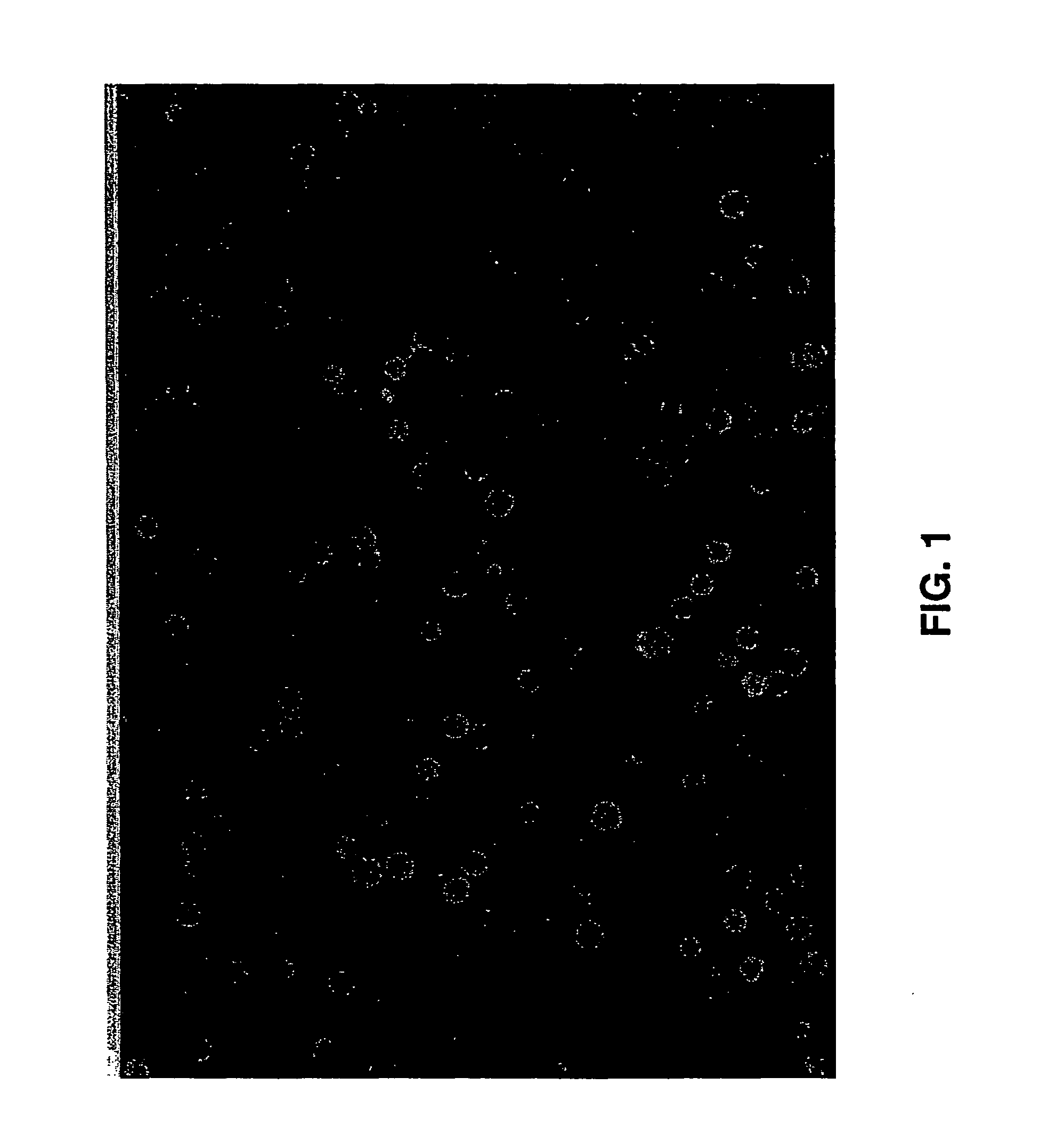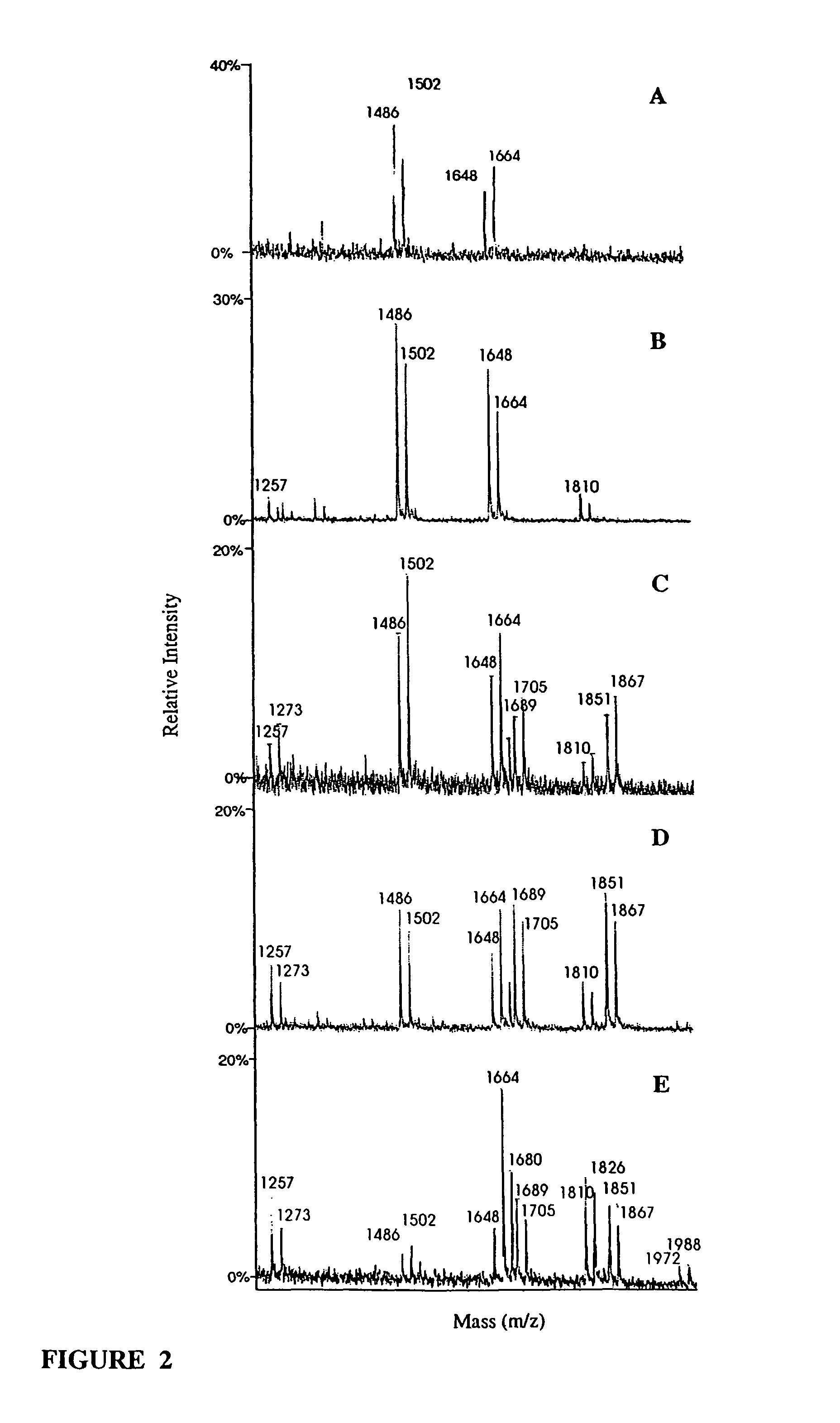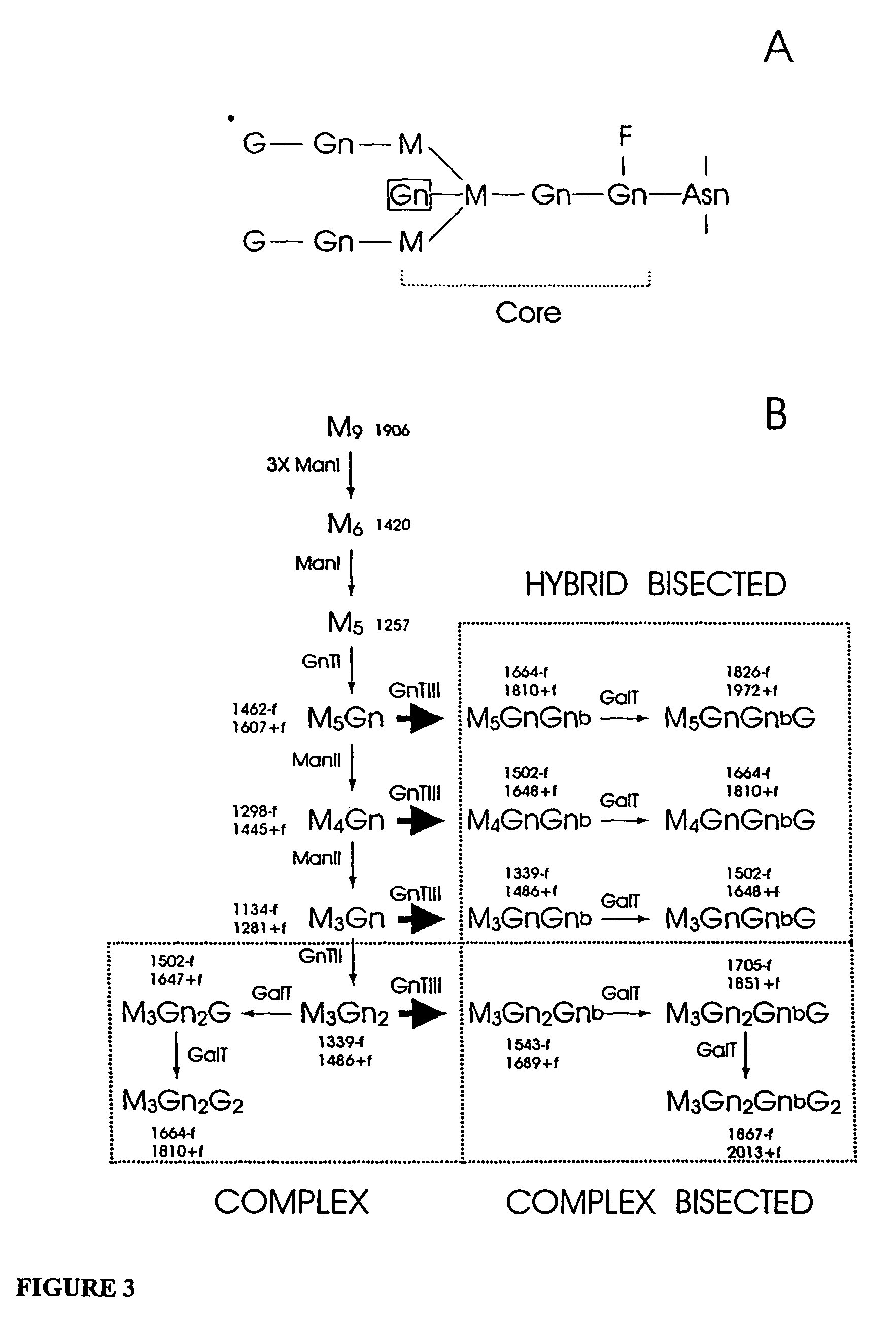Antibody glycosylation variants having increased antibody-dependent cellular cytotoxicity
a glycosylation variant and antibody technology, applied in the field of glycosylation engineering of proteins, can solve problems such as reducing biological activity, and achieve the effect of increasing fc-mediated cellular cytotoxicity
- Summary
- Abstract
- Description
- Claims
- Application Information
AI Technical Summary
Benefits of technology
Problems solved by technology
Method used
Image
Examples
example 1
New Versions of the Chimeric Anti-CD20 Antibody IDEC-C2B8 Having Enhanced Antibody-Dependent Cellular Cytotoxicity Obtained by Glycosylation Engineering of an IDEC-CEB8 Producing Cell Line
[0110]Synthesis of VH and VL coding regions of IDEC-C2B8 and construction of mammalian expression vectors. cDNAs encoding the VH and VL regions of IDEC-C2B8 antibody were assembled from a set of overlapping single-stranded oligonucleotides in a one-step process using PCR (Kobayashi, N., et al., Biotechniques 23:500-503(1997)). The original sequence data coding for IDEC-C2B8 VL and VH were obtained from a published international patent application (International Publication Number: WO 94 / 11026). Assembled VL and VH cDNA fragments were subcloned into pBluescriptIIKS(+), sequenced and directly joined by ligation to the human constant light (Ig κ) and heavy (IgG1) chain cDNAs, respectively, using unique restriction sites introduced at the variable and constant region junctions without altering the orig...
example 2
New Versions of the Anti-Renal Cell Carcinoma Antibody chG250 Having Enhanced Antibody-Dependent Cellular Cytotoxicity Obtained by Glycosylation Engineering of a chG250 Producing Cell Line
[0123]1. Cell Culture
[0124]SP2 / 0 mouse myeloma cells producing chG250 chimeric mAb (wt-chG250-SP2 / 0 cells) were grown in standard cell culture medium supplemented with 1:100 (v / v) penicillin / streptomycin / antimycotic solution (SIGMA, Buchs, Switzerland). Cells were cultured at 37° C. in a 5% CO2 humidified atmosphere in Tissue Culture Flasks. Medium was changed each 3-4 days. Cells were frozen in culture medium containing 10% DMSO.
[0125]2. Generation of SP2 / 0 Cells with pGnTIII-puro Expression
[0126]wt-chG250-SP2 / O myeloma cells were transfected by electroporation with a vector for constitutive expression of GnTIII operatively linked via an IRES to a puromycin resistance gene. 24 hours before electroporation culture medium was changed and cells were seeded at 5×105 cells / ml. Seven million cells were ...
example 3
Treatment of Immune-Mediated Thrombocytopenia in a Patient with Chronic Graft-Versus-Host Disease
[0140]Autoimmune thrombocytopenia in chronic graft-versus-host disease represents an instance of B-cell dysregulation leading to clinical disease. To treat immune-mediated thrombocytopenia in a subject with chronic graft-versus-host disease, an anti-CD20 chimeric monoclonal antibody prepared by the methods of the present invention and having increased ADCC is administered to the subject as described in Ratanatharathorn, V. et al., Ann. Intern. Med. 133(4):275-79 (2000) (the entire contents of which is hereby incorporated by reference). Specifically, a weekly infusion of the antibody, 375 mg / m2 is administered to the subject for 4 weeks. The antibody therapy produces a marked depletion of B cells in the peripheral blood and decreased levels of platelet-associated antibody.
PUM
 Login to View More
Login to View More Abstract
Description
Claims
Application Information
 Login to View More
Login to View More - R&D
- Intellectual Property
- Life Sciences
- Materials
- Tech Scout
- Unparalleled Data Quality
- Higher Quality Content
- 60% Fewer Hallucinations
Browse by: Latest US Patents, China's latest patents, Technical Efficacy Thesaurus, Application Domain, Technology Topic, Popular Technical Reports.
© 2025 PatSnap. All rights reserved.Legal|Privacy policy|Modern Slavery Act Transparency Statement|Sitemap|About US| Contact US: help@patsnap.com



